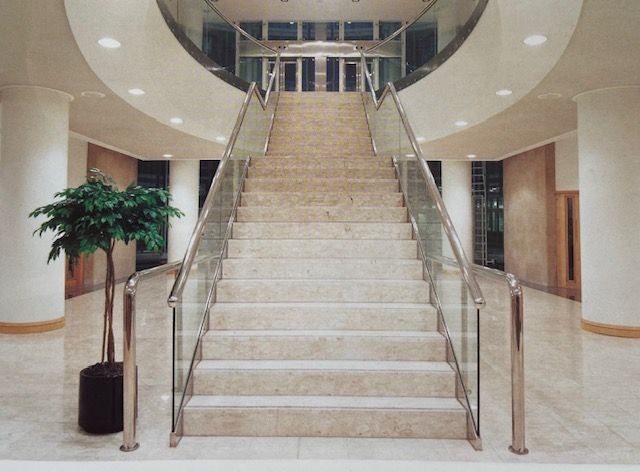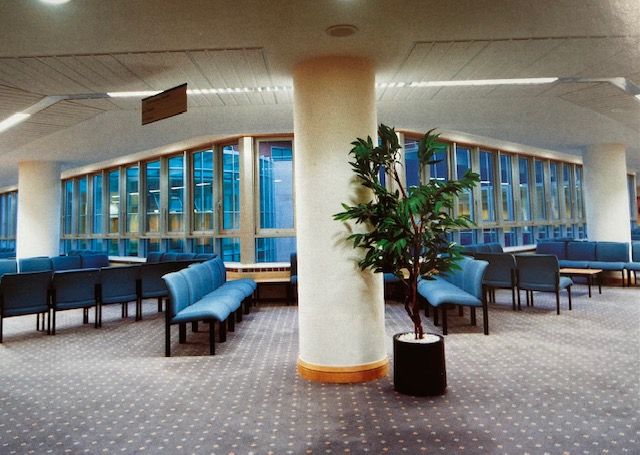
Here’s a Sheffield building that you’ll have seen on TV, but its interiors are seldom seen. The Law Courts, at West Bar, don’t attract much passing traffic and pedestrians rarely have reason to venture here.
However, the building is significant as being an important contribution to Britain’s scales of justice.
The fate of the Old Town Hall at Castle Street, and its latter role as a Crown Court, is well publicised and has stood empty in favour of this purpose-built complex since 1995.

In the 1990s, HM Courts Services accepted that the old Crown Court was unsuitable, and that new facilities were needed.
A slightly sloping site was acquired at West Bar, once a thriving thoroughfare, and which had fallen on hard times. The construction of new Law Courts was seen as ‘an expression of confidence in the rehabilitation of the area’.
The Court Service’s requirement for the new Law Courts was for a building with ten Crown Courts, three County Courts, all ancillary facilities, and the Sheffield Probate Sub-Registry.
An integrated team was created under the management of TBV Consult, comprising the client, design consultants, and contractor.


The building was designed by The Napper Partnership (which also designed law courts at Greater Manchester, Bournemouth, Gloucester, Newcastle, Bradford, and Teesside), and construction undertaken by Laing Yorkshire. It took 30 months to complete, coming in three weeks ahead of schedule, and opened for business on programme on 1 November 1995.
The result was a five-storey rectangular building planned around a central courtyard. At second floor level a broad public concourse looking out into the courtyard gave access to the ten Crown Courts. The building was designed to utilise the sloping site which allowed the custody vehicle lock to be provided at lower ground together with the custody area and staff secure covered parking.
The courts had pale maple joinery, high ceilings and extensive windows, a far cry from the dark court rooms of old.

The aim of the design was to establish a tradition by using local materials within an understandable architectural language.
The structure of the building and its organisation in plan and section were clear and distinct, with the column grid forming the basic module for the design of the elevations. The courtrooms situated at second floor level were expressed externally as projecting stone bays supported on robust stone pillars.
Harman and Minnis, in Pevsner’s Architectural Guide, weren’t impressed: –
“A large and forbidding complex built 1993-96, they display a disconcerting mixture of Postmodern elements as though the architects were hedging their bets. The disparate elements simply do not add up, and the result is a building that is as pompous as it is graceless.”

The Law Courts were officially opened by the Right Hon, The Lord Peter Taylor of Gosforth, Lord Chief Justice of England, on 17 May 1996. He was seriously ill at the time and died a few weeks later. Princess Anne made an unannounced visit to the Law Courts in July 2021 to unveil a plaque marking the 25 years since the building was first opened (it had been postponed from 2020 due to the pandemic).




© 2021 David Poole. All Rights Reserved.